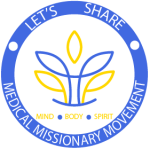Introduction:
In the evolving landscape designs of healthcare, the rivalité of health and science heralds a new era of unheard of innovations. This article explores amazing developments at the intersection of two domains, shaping the future of healthcare and revolutionizing individual outcomes.
Emerging Technologies:
Synthetic Intelligence (AI) in Rapport:
AI-driven diagnostic tools are generally transforming the accuracy in addition to speed of disease detection.
Machine learning algorithms examine medical images, detect styles, and assist clinicians in early and precise diagnosis.
Telehealth and Remote Patient Checking:
Telehealth platforms and wearable devices enable remote services and continuous health watching.
Patients can receive individualized care from the comfort of their family homes get more info, improving accessibility and bringing down healthcare disparities.
Genomic Medicinal drugs and Precision Healthcare:
Innovations in genomic sequencing add up to personalized treatment plans determined an individual’s genetic makeup.
Detail medicine tailors interventions, tuning therapeutic outcomes and decreasing side effects.
Revolutionizing Treatment Types:
Immunotherapy and Gene Enhancing:
Immunotherapy harnesses the body’s immunity mechanism to target and eliminate cancer cells.
Gene editing properties like CRISPR-Cas9 hold promise for precise genetic alters, potentially curing genetic diseases.
Nanotechnology in Medicine:
Nanoparticles deliver drugs with find accuracy, minimizing side effects together with improving treatment efficacy.
Nanodevices enable targeted imaging and even therapy at the cellular together with molecular levels.
3D Stamping in Healthcare:
3D prints facilitates the creation of personalized implants, prosthetics, and organs.
Customized medical products improve patient outcomes and redefine the possibilities of operative interventions.
Data Integration along with Interoperability:
Electronic Health Files (EHRs):
Seamless sharing connected with patient data among medical providers enhances care balance.
EHRs contribute to comprehensive plus real-time patient information, encouraging informed decision-making.
Health Details Exchange (HIE):
Interconnected systems allow the exchange of patient data across different healthcare institutions.
HIE promotes continuity of care and lowers redundancies in diagnostic processes.
Challenges and Ethical Issues to consider:
Privacy and Security Issues:
The increased reliance in interconnected health technologies elevates concerns about patient data files security.
Striking a balance between availability and safeguarding sensitive overall health information becomes imperative.
Equitable Access to Innovations:
Ensuring that promising healthcare technologies are you can get to all demographics is a necessary ethical consideration.
Efforts for you to bridge the digital shift and address healthcare disparities are vital for moral implementation.
Conclusion:
The future of medical lies at the dynamic intersection of health and science, wheresoever innovations redefine possibilities and reshape the patient experience. While technologies continue to advance, meaning considerations and accessibility should remain at the forefront associated with healthcare evolution. By adopting these innovations responsibly, we all pave the way for a medicine and health landscape that prioritizes reliability, accessibility, and improved sufferer outcomes.

